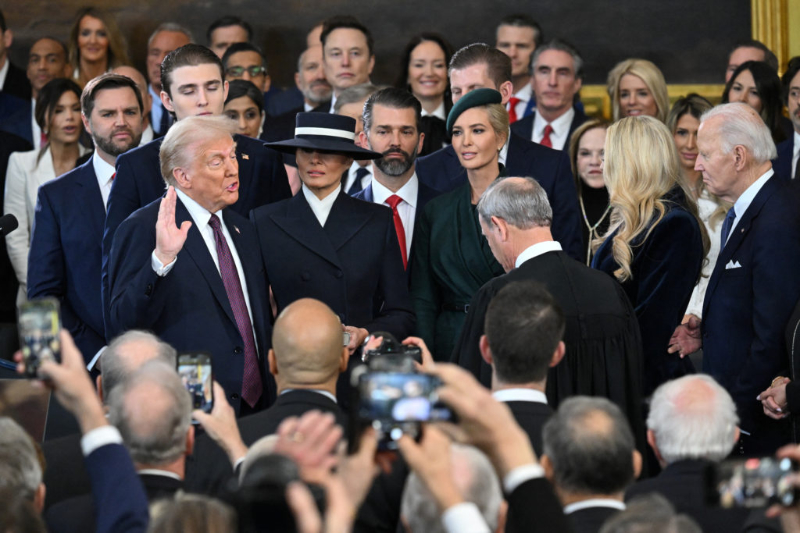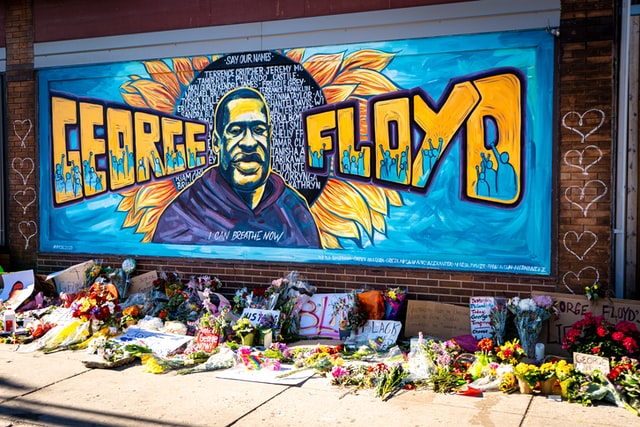“The old world is dying. The new one takes time to appear. And in this chiaroscuro, monsters emerge.”
—Antonio Gramsci
There is a famous story attributed to Hegel that has been widely used to illustrate his philosophy and its relevance to modern thought. In a letter to Friedrich Immanuel Niethammer dated October 13, 1806, the German philosopher recounts having seen Napoleon, whom he refers to as the “soul of the world,” riding on horseback. Beyond the historical and philosophical details of the event, this phrase has become part of the romantic legend surrounding The Phenomenology of Spirit because it occurred just two days before the emperor brought an end to the Holy Roman Empire and Hegel completed that monumental work, marking a turning point in the history of European thought.
Two hundred and eighteen years later, Donald Trump returns to the White House, generating global commotion—not only because of the controversy inherent in his policies but also because of what his victory represents in historical and social terms. A superficial analysis might compare the new president to a modern-day Napoleon, who, like the historical figure, embodies the main characteristics of this era. In this narrative, on January 20, Trump would have solidified his historical position as a symbol of these times, in which similar discourses are gaining traction.
However, both the inauguration ceremony and his victory in November transcend the strictly personal. It is not just about what Trump represents individually but about how he exposes the new dynamics of power in the 21st century. These dynamics are not only about taxes, economic protectionism, strong diplomacy, and his immigration policy. January 20 marked the definitive legitimization of techno-feudalism—not as a mere symbolic construction but as a fully consolidated form of power.
Symbols of Power
As suggested, Trump’s inauguration ceremony, laden with extravagant symbolism, offered several interesting indications of this shift in dynamics. One of the most discussed elements was Melania Trump’s hat, an anachronistic accessory amid a sea of red caps and the graying heads of senators and millionaires. Its sharp contours evoked images of a religious sect. More than just a hat, it became a focal point, amplifying the aura of mystery surrounding Melania, who seemed to retreat into the shadows, avoiding human contact and reinforcing an atmosphere of detachment. Even Trump, attempting to kiss her, fell victim to the hat’s alienating power, ending up kissing the air, unable to bridge the symbolic and literal gap.
Beyond these anecdotes, the gesture that truly captured attention was that of billionaire Elon Musk, who, during the celebrations following the presidential inauguration, made a salute eerily reminiscent of the Nazi’s sieg heil. This was the blatant and scandalous gesture of someone who truly sees himself as the architect of the Republican victory.
This entire mise en scène was encapsulated in the cover of Time magazine. The publication’s brilliance lies in its ability to synthesize the moment into a single image that captures universal elements of our era: the central role of the world’s wealthiest men, the overwhelming power of technology, the transition from an old political order to a new one, and, of course, Melania’s hat.

The magazine cover is divided into two parts. In the upper section, subtly hidden behind the title, appears a fragment of The Surrender of General Burgoyne, a painting by John Trumbull that hangs today in the Capitol Rotunda in Washington, D.C. The artwork represents a crucial moment in the American Revolution during the Battle of Saratoga on October 17, 1777. It symbolizes the triumph of the colonies and the humiliation of the British while portraying unity and legitimacy through the ceremonial and theatrical poses of its central figures. Completed in 1821, the painting is an icon of the American Revolution, and in the cover image, it appears behind the guests and key figures of this modern political theater.
In the foreground of the cover, the Trump family is present, along with Vice President JD Vance to the left, almost exiting the frame yet visibly demonstrating strong support for Donald Trump. The brilliance of the photo does not lie in positioning the president as the apparent focal point of the inauguration, nor, upon deeper examination, in its subtle reference to Biden’s defeat, with the outgoing former president slightly shifted to the right, unnaturally fading from the frame and looking downward with a distinctive expression. This could have been the expected message of a typical political event: the contrast between good and evil, defeat and victory, etc. However, the composition conveys something far more complex and unsettling.
What is truly disturbing about the photo is the presence of the world’s richest man, who appears almost at the center of the cover, staring directly at the viewer. He is the only person in the image who clearly challenges our gaze. Musk, therefore, becomes the actual subject of the image, connecting all composition layers and balancing the dramatic tension between Trump and Biden through a perfectly closed triangular structure that places him at its apex.
Behind the Symbolism
The latest U.S. elections did not merely signify Donald Trump’s return to the White House. They also reflected the broader failure of the Democratic Party and its political and media allies to recognize and address the rise of an emerging technological power. Biden and the Democratic elite failed to contain the “red wave,” distancing themselves from the working class and popular sectors whose support was crucial for victory. More importantly, they also failed to grasp the immense influence that major tech companies have accumulated over the past decades.
This 2.0 version of Trump represents both a victory for the American conservative electorate and the consolidation of a global narrative. Evidence of this lies in the support shown by leaders such as Italian Prime Minister Giorgia Meloni, Hungarian Prime Minister Viktor Orbán, and Argentine President Javier Milei. The consolidation of this global backing and its transformation into a symbol of contemporary right-wing ideology becomes particularly relevant in our hyperconnected world, resonating even in the most distant corners of Washington’s political sphere.
This “monstrous” dynamic, in the Gramscian sense, reveals the alignment between economic power, technological dominance, and political ideology into a unified front. It is no longer just about nation-states or individual billionaires; we are witnessing an unprecedented concentration of influence that transcends borders and redefines global politics—flirting even with the idea of replicating this system of influence on the Moon and Mars. This unregulated and often opaque power dictates not only economic policies but also cultural narratives, shaping what we consider acceptable, desirable, or even possible.
The key to understanding this process is the emergence of techno-feudalism. The philosophical premise of this movement is that, in today’s world, objectivity has little relevance in our lives. Even when we know something to be true, we simultaneously legitimize its virtual transformation. As a result, truth has been relegated in favor of performative agency. Trump understands this, and so does Musk.
Farhad Omar characterizes techno-feudalism as “the centralization of economic power and control in the hands of a few tech giants who, through their dominance over vast data resources and digital platforms, have become the new lords of the global economy.” Similarly, in his book Technofeudalism: What Killed Capitalism, Yanis Varoufakis argues that modern markets have been “replaced by digital trade platforms that resemble markets but are not.” According to him, entering Amazon.com means leaving capitalism behind and stepping into something akin to a “digital fiefdom,” a domain controlled by a single entity and its algorithm.
Beyond definitions, the new techno-feudal order yields grim outcomes. Magnate Bernie Madoff diverted $65 billion from Wall Street through a Ponzi scheme. Sam Bankman-Fried, under the guise of ethics and an entire philosophy of utilitarianism and effective altruism, was sentenced to 25 years in prison for stealing $8 billion from his clients. Added to this are the growing bets on artificial intelligence, robotics, and cryptocurrencies—implemented without necessary security protocols or adequate debate about their implications.
Ultimately, beyond Musk’s gestures or the populist theatrics of the inauguration, the true danger lies in the underlying logic. This new order is particularly insidious because it does not require coercion for legitimacy—it emerges from controlling the data that shape our perception of the world. Controlling the narrative means Musk can perform a fascist salute and, the next day, offer no explanation, apology, or coherent statement about it. It means the world’s richest man can literally do as he pleases, even with the president of the most powerful nation on the planet, without being held accountable by any law—because he stands above it.
Controlling the narrative also means diverting our attention to endless debates over largely insignificant details—whether the gesture was truly fascist, the precise angle of his arm, his facial expression, and so on—while keeping the broader picture and the dialectics of social relations in the background.
This is what it is about: controlling even the values by which we judge reality while living trapped in a world increasingly resembling a mix of Squid Game, South Park, and Idiocracy. Through this lens, we must analyze Trump’s (Musk’s) inauguration, or the signing of executive orders staged like a reality show. The spectacle masks a deeper shift: the consolidation of a system in which control over truth, perception, and agency lies in the hands of those who dominate the digital landscape, capable of shaping reality to their will.
Welcome, then, to the desert of the political metaverse.




